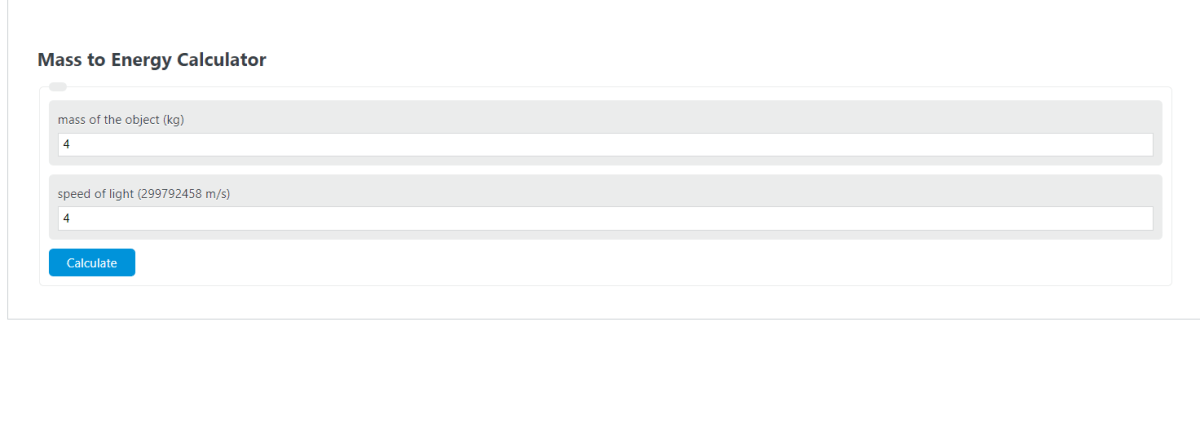Enter the mass of the object and the speed of the light calculator to determine the Energy from Mass.
- All Energy Calculators
- E=mc2 Calculator
- Rest Energy Calculator
- Photon Energy Calculator
- Moles to Energy Calculator
- Decay Energy Calculator
- Oil Energy Calculator
Mass to Energy Formula
The following equation is used to calculate the Mass to Energy.
E = m*V^2
- Where E is the Mass to Energy (Joules)
- m is the mass of the object (kg)
- V is the speed of light (299792458 m/s)
To calculate energy from mass, multiply the mass by the speed of light squared.
What are the units for Mass to Energy?
The most common units for Mass to Energy are Joules.
How to Calculate Mass to Energy?
Example Problem:
The following example problem outlines the steps and information needed to calculate the Mass to Energy.
First, determine the mass of the object. In this example, the mass of the object is determined to be 5 (kg).
Next, determine the speed of light. For this problem, the speed of light is measured to be (299792458 m/s).
Finally, calculate the Mass to Energy using the formula above:
E = m*V^2
Inserting the values from above and solving the equation with the imputed values gives:
E = 5*299792458^2 = 9.95e15 (Joules)
FAQ
What is the significance of the speed of light in the mass to energy conversion formula?
The speed of light (denoted as V in the formula) is a constant value in physics, representing the maximum speed at which all energy, matter, and information in the universe can travel. In the mass to energy conversion formula, it’s squared, indicating that even a small amount of mass can be converted into a large amount of energy, highlighting the efficiency of mass-energy equivalence.
Can mass be converted into energy in practical applications?
Yes, mass can be converted into energy in practical applications, most notably in nuclear reactions. In nuclear fission and fusion, small amounts of mass are converted into energy, following the principle outlined by E=mc^2. This process powers nuclear reactors and the Sun, respectively.
How accurate is the mass to energy conversion formula for calculating energy in everyday objects?
The mass to energy conversion formula, based on Einstein’s theory of relativity, is incredibly accurate for calculating the energy potential of any mass. However, in everyday objects and situations, the actual conversion of mass to usable energy on a noticeable scale is not feasible with current technology, except in nuclear reactions. The formula is more a theoretical demonstration of the potential energy stored in mass rather than a practical tool for everyday energy conversion.
